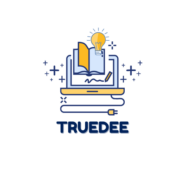The higher education industry has undergone a dramatic transformation in recent years. As I dive into this complex landscape, I can’t help but notice how technology and shifting societal needs are reshaping the way we learn and teach. With rising tuition costs and increasing student debt, many are questioning the value of a traditional degree. From online courses to hybrid learning models, the options for education are expanding. I find it fascinating how institutions are adapting to meet the demands of a diverse student population while striving to maintain academic rigor. This evolving industry not only impacts students but also influences the workforce and economy at large. Let’s explore the current trends, challenges, and opportunities that define the higher education landscape today.
- Dramatic Transformation: The higher education industry is evolving rapidly due to technological advancements and societal demands, shifting the traditional learning and teaching models.
- Rising Tuition and Debt: Tuition costs continue to increase, contributing to a significant student debt crisis that has surpassed $1.7 trillion in the U.S.
- Emphasis on Online Learning: There has been a 93% increase in online course enrollment, making flexible and accessible education a key trend for students and institutions alike.
- Focus on Diversity: Institutions are prioritizing diversity and inclusion, resulting in increased minority enrollment at higher education establishments.
- Global Competition: The rise in international student enrollment enriches the academic environment while enhancing competition among institutions globally.
- Future-Oriented Innovations: Technological innovations, such as AI and VR, alongside evolving job market needs, are reshaping curricula to better prepare students for the workforce.
Higher Education Industry
The higher education industry comprises institutions providing post-secondary education, such as universities, colleges, and vocational schools. It plays a crucial role in workforce development by equipping students with skills and knowledge for various careers. According to the National Center for Education Statistics, approximately 19.7 million students enrolled in degree-granting postsecondary institutions in fall 2020.
Key trends in this industry include:
- Increased Online Learning: With technology integration, online learning platforms gained popularity, offering flexibility and accessibility for students. Institutions reported a 93% increase in online course enrollment during the COVID-19 pandemic.
- Rising Tuition Costs: Tuition rates have steadily increased, with an average of 3.5% annual growth. This rise contributes to student debt, which exceeded $1.7 trillion in the U.S. by 2021.
- Alternative Education Models: Bootcamps, MOOCs (massive open online courses), and micro-credentials have emerged as viable alternatives to traditional degrees. These options cater to learners seeking specific skills aligned with job market demands.
- Focus on Diversity and Inclusion: Institutions prioritize diversity initiatives, aiming to create inclusive environments. Data from the U.S. Department of Education shows an increase in minority enrollment in higher education, reaching 44% in fall 2020.
- Global Competition: The rise of international students strengthens global competition among institutions. The Institute of International Education reported over 1 million international students in the U.S. for the 2020-2021 academic year.
The higher education landscape continuously evolves, influenced by these trends. Institutions strive to meet the changing needs of students and the job market while addressing challenges like affordability and accessibility.
Key Players in the Higher Education Industry

The higher education industry includes diverse entities, each playing a vital role in shaping the educational landscape. These key players encompass public institutions and private institutions, both contributing significantly to higher education.
Public Institutions
Public institutions represent a substantial segment of the higher education landscape. Funded primarily through state and federal government sources, these universities and colleges aim to serve local populations and maintain affordable tuition rates. Their commitment to accessibility results in higher enrollment rates, with public universities accommodating around 80% of undergraduate students in the U.S. Notable examples include the University of California and the State University System of New York. Public institutions often offer extensive programs, research opportunities, and community outreach initiatives, fostering regional economic growth and workforce development.
Private Institutions
Private institutions vary significantly in size, tuition rates, and educational offerings. Funded through tuition, donations, and endowments, they often provide specialized programs, tailored educational experiences, and smaller class sizes. Competitive scholarships and financial aid packages attract diverse student populations. Elite institutions like Harvard University and Stanford University exemplify the high academic standards and rich resources associated with private colleges. These institutions frequently emphasize research output, global networking opportunities, and internships, equipping students for successful careers in various fields.
Trends Shaping the Higher Education Industry

Higher education is witnessing transformative trends that redefine learning dynamics and institutional approaches. These developments address increasing student demand for flexibility and global opportunities.
Online Learning
Online learning continues to see unprecedented growth, driven by its accessibility and convenience. Data shows a 93% increase in enrollment during the COVID-19 pandemic. Institutions are leveraging technology to create engaging online courses, allowing students to learn at their own pace. Programs offer asynchronous options, making it easier for working professionals to balance studies with their careers. Furthermore, many universities are integrating interactive elements like virtual classrooms and immersive simulations, enhancing the overall learning experience while broadening the reach to various demographics.
Internationalization
Internationalization has become a critical element of higher education, enriching academic communities and cultural exchanges. Institutions now focus on attracting international students to foster diversity and expand global networks. In the 2020-2021 academic year, over 1 million international students enrolled in U.S. colleges and universities. This influx contributes to the economic landscape, adding billions to the economy each year. Additionally, partnerships with overseas institutions facilitate joint programs and student exchanges, providing students with global perspectives and unique learning opportunities that prepare them for a competitive workforce.
Challenges Facing the Higher Education Industry

The higher education industry faces numerous challenges that significantly impact its operations and the experiences of its students. Two major concerns include affordability issues and the complexities associated with regulation and accreditation.
Affordability Issues
Affordability remains a pressing challenge within the higher education sector. Tuition costs continue to rise, creating barriers for many prospective students. Data shows that the average tuition for public four-year universities reached approximately $10,740 for in-state students in the 2021-2022 academic year, while out-of-state students faced an average of $27,560. Rising tuition contributes to the staggering $1.7 trillion in student debt, which can deter students from pursuing degrees. Institutions are increasingly pressured to offer scholarships, grants, and payment plans to alleviate this burden, yet the gap between financial aid and actual costs widens.
Regulation and Accreditation
Regulation and accreditation pose significant challenges for higher education institutions. Accreditation ensures that programs meet specific standards and quality benchmarks. The process can be time-consuming and complex, with institutions needing to comply with various federal, state, and regional regulations. Failure to maintain accreditation can lead to loss of federal funding and diminish the institution’s reputation. Furthermore, navigating changing policies, such as those related to online learning and financial aid, requires institutions to stay adaptive and proactive. As regulations evolve, institutions must strategically align their operations to maintain compliance and support student success.
Future of the Higher Education Industry
The higher education industry faces a transformative future shaped by technological innovations and changing job market needs. Institutions must adapt to remain relevant and meet the demands of students and employers.
Technological Innovations
Technological advancements play a pivotal role in shaping the future of higher education. Artificial intelligence (AI), virtual reality (VR), and blockchain technology enhance learning experiences and operational efficiency.
- AI Integration: AI tools assist in personalized learning experiences. Such tools analyze student performance and adapt course materials accordingly while offering 24/7 support via chatbots.
- VR and AR: Virtual and augmented reality technologies provide immersive learning experiences. They simulate real-world scenarios, especially in fields like medicine and engineering, allowing students to practice skills in a risk-free environment.
- Blockchain: Blockchain technology enables secure credentialing and record-keeping. Its use in academic transcripts prevents fraud and simplifies verification processes for employers.
- Learning Management Systems (LMS): Enhanced LMS platforms offer more interactive content. They support a blended learning approach, combining traditional classroom methods with online resources.
- Data Analytics: Institutions increasingly utilize data analytics to track student engagement and success metrics. Insights gained lead to improved program designs and targeted interventions for at-risk students.
Evolving Job Market Needs
The job market’s evolving requirements demand a shift in how higher education institutions design their programs. Employers expect graduates to possess both technical skills and soft skills, highlighting the need for curricular updates.
- Skill-Based Learning: The shift toward skill-based education emphasizes practical experience over traditional degrees. Programs must incorporate internships, apprenticeships, and real-world projects to ensure graduates gain relevant skills.
- Interdisciplinary Approach: Businesses increasingly value interdisciplinary knowledge. Programs combining technology, business, and the arts prepare students for diverse roles within complex organizations.
- Lifelong Learning: The rise of lifelong learning reflects a commitment to continuous skill development. Institutions are expanding options for adult learners seeking flexible education paths through micro-credentials, online courses, and bootcamps.
- Soft Skills Development: Employers prioritize soft skills such as communication, teamwork, and problem-solving. Integrating these skills into curricula enhances graduates’ employability and adaptability in diverse job markets.
- Remote Work Preparedness: The increase in remote work scenarios requires institutions to train students for virtual collaboration. Programs must emphasize digital communication tools and provide experience in remote team dynamics.
By prioritizing these technological innovations and adjusting to the evolving job market needs, higher education institutions can position themselves for success in an increasingly competitive landscape.
The higher education industry is undergoing a profound transformation. As technology reshapes learning and societal needs evolve, institutions must adapt to stay relevant. It’s clear that affordability and accessibility remain pressing challenges.
I believe that embracing innovative educational models will be crucial for future success. By prioritizing diverse learning options and addressing financial barriers, institutions can better serve students and meet workforce demands.
This dynamic landscape offers exciting opportunities for growth and improvement. With the right strategies in place, higher education can continue to thrive and empower the next generation of learners.

